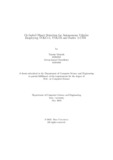Occluded object detection for autonomous vehicles employing YOLOv5, YOLOX and Faster R-CNN
Abstract
Autonomous vehicles [AVs] are the future of transportation and they are likely to
bring countless benefits compared to human-operated driving. However, there are
still a lot of advances yet to be made before these vehicles can be considered com pletely safe and before they can reach full autonomy. Perceiving the environment
with utmost accuracy and speed is a crucial task for autonomous vehicles, ergo mak ing this process more efficient and streamlined is of paramount importance. In order
to perceive the environment, AVs need to classify and localize the different objects
in the surrounding. For this research, we deal with the detection of occluded ob jects to help enhance the perception of AVs. We introduce a new dataset containing
occluded instances of road scenes from the perspective of Bangladesh. We utilized
transfer learning to train the YOLOv5, YOLOX and Faster R-CNN models, using
their respective pre-trained weights on the COCO dataset. We then evaluate and
compare the performance of the three object detection algorithms on our dataset.
YOLOv5, YOLOX, and Faster R-CNN achieved mAP at 0.5 metric of 0.777, 0.849
and 0.688, and mAP at 0.5:0.95 of 0.546, 0.634, and 0.422 respectively in our test
set. Therefore, we find YOLOX to be the best performing model on our dataset,
and its high mAP scores demonstrate the effectiveness of the model as well as the
dataset.

